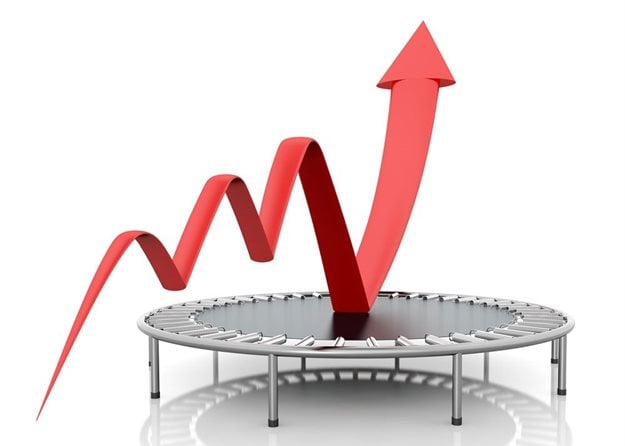Trending




 Sabre EMEA 2024 Awards: Razor PR, Retroviral top SA agenciesDanette Breitenbach
Sabre EMEA 2024 Awards: Razor PR, Retroviral top SA agenciesDanette Breitenbach
Elections 2024
Experian BDI improves sharply in Q3 2020 following heavily depressed Q2

According to Jaco van Jaarsveldt, chief decision analytics officer at Experian Africa, the Covid-19 pandemic and its impact on economic activity as a result of the lockdown played a significant role in bringing about a deterioration in the BDI in previous quarters, but by Q3, far more business activity was being conducted than in Q2.
“During Q2, both international and domestic economies were heavily locked down in an effort to quell the spread of Covid-19. This meant that many sectors saw activity declining by between 50% and 100% through the course of April specifically. From May onwards, some of the lockdown restrictions gradually came to be lifted, which benefitted Q3 greatly. Domestically, it has been observed that a variety of economic indicators have progressively improved with the relaxation of lockdown restrictions, as human behaviour and business conditions gradually aspired to return to normality. This was the dominant trend in economic activity and the debt metrics of businesses overall in Q3.”

Macroeconomic factors influencing Q3 2020
Businesses and consumers benefited in Q3 from the fiscal and monetary stimulus packages introduced.
In advanced economies, these stimulus packages, which included both fiscal and monetary packages, amounted to approximately $20tn. Of this, between 30% and 40% was injected into the US economy, enabling it to recover quite strongly. Whereas in April, some 22 million jobs were lost in the US, by September around half of these had been regained.
“In South Africa, however, the stimulus packages were not as dramatic, but consumers and businesses still benefited from the 30% effective reduction in their debt servicing costs as a result of the cut in the prime overdraft rate from 10% at the beginning of the year, to 7% in July. In addition, from the fiscal side, many of those businesses and consumers who were retrenched or received pay cuts during the strictest phase of lockdown benefited from the Temporary Employee Relief Scheme (TERS) executed by the Unemployment Insurance Fund and introduced by the government to provide some temporary financial relief. Banks were also encouraged to provide temporary interest payment holidays for holders of mortgage advances, car loans and other relevant forms of debt,” says Van Jaarsveldt.
Positive debt metrics buoyed the overall BDI in Q3
Besides the recovery in economic growth, the other important factor contributing towards the improvement in the BDI in Q3 was the decline in outstanding debtors’ days as a reflector of the financial position of businesses.
Overall debtors’ days outstanding fell dramatically from a decade-long high of 64.5 days in Q2 and 59.8 days in Q1, to just 55.2 days in Q3. Similarly, the ratio of the longer-term outstanding debt to the shorter-term debt narrowed dramatically from a record 12.1% in Q2 and 9.3% in Q1, to 7.5% in Q3.
Says Van Jaarsveldt, “The reduction in this ratio negated the impact of an increase in the 30 to 60 days ratio, which increased from 29.4% in Q2, to 33.8% in Q3. It seems that the increase in the economic activity post lockdown has supported stronger cash flows which resulted in an overall improvement in debtors’ days, notwithstanding the fact that the 30:60 day measure has deteriorated.”
Significant improvement in all sectors
All ten sectors of the economy showed improvement in economic growth, with those sectors which had experienced the steepest declines during the stringent lockdown of Q2, such as mining, manufacturing, construction, transport and communication, and retail sales and accommodation, recording the biggest proportionate improvements in Q3.
While this had the effect of vastly improving the BDI readings for every single sector, Van Jaarsveldt says that only the agricultural sector has seen a move into positive territory for the BDI.
“This stems from three consecutive quarters of double-digit growth in agricultural output following the excellent harvests recorded this year in the wake of solid rainfall over the 2019/20 summer season.”
Mining improved from -4.08 in Q2, to -0.42 in Q3, with the recovery in manufacturing and wholesale and retail trade and accommodation, not falling behind by much in order of magnitude. The smallest relative recovery was recorded by the financial and business services sector, but then this sector was nowhere near as badly affected by the stringent lockdown experienced in Q2 as most of the other sectors.
Outlook
Whilst continued recovery is foreseen in the year ahead, it is unlikely to be nearly as dramatic as that witnessed in Q3 alone.
Van Jaarsveldt noted that we are likely to see the recovery losing some momentum in the coming months. Most of the lockdown restrictions have been lifted, so the marginal benefit of such developments is petering out. Additionally, some of the relief packages such as the TERS, the temporary interest holidays provided by banks and the extra social grants funded by government, are set to mature in coming months.
A sharp escalation in the rate of infections in Europe and North America over the past two months has compelled some leading countries to reintroduce social restrictions in order to quell the second wave of the coronavirus. As a consequence, it is likely that the recovery witnessed aboard, which indirectly benefited the domestic economy, will lose some momentum in the coming months.
The re-introduction of some restrictions on freedom of movement in South Africa as a result of an acceleration in the rate of Covid-19 infections domestically has resulted in renewed restrictions across three regions, including Nelson Mandela Bay, the Garden Route and the Sarah Baartman District most recently, with additional tightening on the gathering of large groups, especially on beaches.
Looking slightly further out, global economic confidence has been buoyed by the expectation of a rollout of newly developed anti-Covid-19 vaccines. The spectre of a return to normality and pre-Covid-19 economic activity is no longer an academic source of hope but a real one instead.
Van Jaarsveldt concludes, “Despite the outlook, it is important to reflect on the fact that economic growth and business debt conditions in South Africa were deteriorating even prior to the onset of the Covid-19 crisis. This was attributable to structural weaknesses impeding the economy from fulfilling its full potential. Unless those structural weaknesses are effectively addressed in the coming months, one should not expect business debt conditions to move into an improvement phase in absolute terms for a long while to come. The best that one can hope for is that the rate of deterioration in business debt conditions in the short to medium term will simply become much more temperate. We, thus, recommend businesses to remain very focused on cash flow management, ensuring stock holding aligns with both capacity restrictions and consumer demand.”











